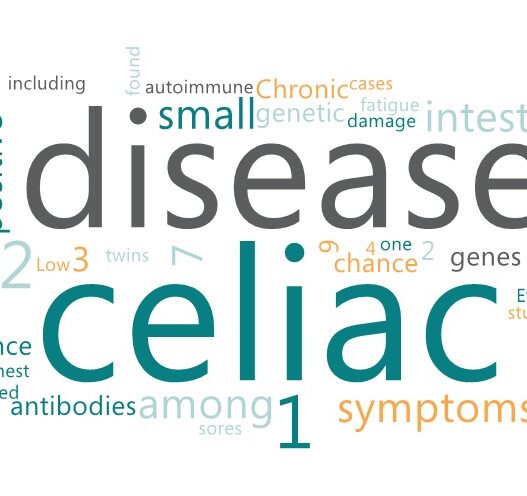What is Gut Microbiota? Why do we have Gut Microbiota? What is Dysbiosis? What are dysbiosis symptoms? What causes dysbiosis? How to maintain a healthy gut microbiome using probiotic, prebiotic, or synbiotic? What is the difference between probiotic, prebiotic and synbiotic?
Ever heard the phrases like “Gut feeling” or “trust your gut”?
These phrases refer to having and trusting your intuition or sixth sense. It means listening to your inner voice and acting accordingly. But what is so special about the gut? Is that to do with that tingling sensation that we feel in our stomach when we are in love or that uneasiness when we are nervous? Well, maybe yes, but there is much more to it!
Gut Microbiota!!!!
What is Gut Microbiota?
The gut refers to the entire gastrointestinal system- a long tube that starts at the mouth, comprises the food pipe, stomach, and intestine, and ends at the anus. Apart from our body’s cells and molecules, it also harbors trillions of microorganisms like bacteria, viruses, fungi, protists, yeast, etc. The sum total of all the microbes that reside in our gut is called the gut microbiota. Among them, bacteria are in maximum numbers and their composition and functions are most well studied. The density and diversity of these microbes are different in different parts of the gut. As per the current knowledge, the maximum number and diversity of gut microbes are found in the colon, followed by the ileum, stomach, duodenum, and oesophagus in descending order (1).
Where do they come from?
Infants receive a part of the mother’s gut microbiota during birth. A baby receives microbiota from breastfeeding, baby food, and also from the immediate environment. The majority of the microbiota diversifies during the first few years of life.
Every adult has a signature microbiota composition that is compatible with a person’s genetics, environment, nutritional patterns, lifestyle, etc. Diet also influences around 20 percent of healthy microbiota composition during our lifetime.

Why do we have gut microbiota?
These minuscule beings are involved in several crucial functions in their host and turn, they get an ample supply of nutrients and warm shelter to live. Our association with these microbes is an excellent example of a symbiotic relationship, where both parties have something to gain. Some of their functions are:
Synthesis of vitamins:
Some species of gut microbiota synthesize vitamin B (e.g. biotin, cobalamin, folates, and others) and Vitamin K. These vitamins can be utilized by the host as well as by vitamin non-producing microbes present in the gut.
Contribution to host metabolism, which in turn affects various body functions:
These microbes feed on the components of the food that we eat. The microbial enzymes complement the activity of digestive enzymes present in our gut and liver to generate metabolites like short-chain fatty acids (SCFAs), peptides, etc. These metabolites contribute to a variety of body functions (2).
Biotransformation (structure modification) of bile acids:
Some colonic microbes (those that reside in the colon) are also involved in the biotransformation (structure modification) of bile acids. This biotransformation reduces their toxicity and aids in the reabsorption of bile salts back to the liver (2).
Aid in the digestion of some food components:
Complete digestion and metabolism of some food components in the gut require the involvement of the activity of microbes. Research also suggests that different metabolites can be produced from the same food component, depending on the consortium of gut microbes (2).
Involved in genetic expression:
SCFAs, peptides, and other such metabolites produced by gut microbes can directly participate in cellular signaling or modulate the expression of genes by various mechanisms (3).
Protection from harmful bacteria by competition and secretion of antimicrobial components:
The symbiotic or harmless gut microbiota protects the host against pathogenic microorganisms by outcompeting them by using the nutrients and space (Disease occurs when good microbiota lose this competition).
Dysbiosis Symptoms
To perform these functions effectively, a healthy microbiota balance must be maintained. But when that balance is disturbed, it is called dysbiosis – a state wherein the host may suffer from various ailments. Dysbiosis can cause several problems. Some of the dysbiosis symptoms and problems are described below:
Metabolic disorders:
The gut microbiome interacts with dietary components and influences host insulin sensitivity, glucose, fat metabolism, and inflammation. All these factors contribute to the development of metabolic diseases like diabetes type 2, obesity, etc.
Cardiovascular diseases:
A decreased abundance of butyrate-producing microbes and increased amounts of trimethylamine-N-oxide (TMAO) produced by microbes (especially in people with a high intake of red meat) have been correlated with the occurrence of cardiovascular disease (4).
Autoimmune diseases:
Autoimmune diseases are caused when the immune system starts attacking the body’s cells. Our immune system is usually tolerant to usual gut microbes, but dysbiosis can trigger autoimmunity. This happens when, due to similarity in structure, antibodies directed against an unusual gut microbe cross-react with our cells and start destroying our cells. Research has shown the association of dysbiosis with autoimmune diseases like Inflammatory bowel diseases (IBD), rheumatoid arthritis, systemic lupus erythematosus, multiple sclerosis, etc. (5).
Cancer:
Strong evidence is being mounted to show that dysbiosis may also contribute to carcinogenesis, and also in shaping the response to immunotherapy (6).
Neurological diseases:
An increasing number of studies suggest dysbiosis as a possible susceptibility factor for neurological disorders, including Alzheimer’s disease, autism, Parkinson’s disease, and multiple sclerosis, by regulating the production, transportation, and functioning of neurotransmitters (7).
What causes dysbiosis?
There are multiple causes of dysbiosis:
Taking antibiotics:
Antibiotics are not specific to pathogenic microbes only. Along with the pathogens, they kill healthy bacteria also. This is the reason why patients consuming antibiotics suffer from gastric issues like bloating, gas and constipation, irritability, general weakness, etc.
Changing the dietary patterns:
Consumption of extreme diets like high fat, high protein, a complete shift from plant-based to animal-based diets or vice versa, etc. can also result in a change in the microbiota composition in the gut (8).
Alcohol and Smoking:
These factors lead to a transient change in pH and a decline in some organic acids in the gut that leading to a change in the composition of gut microbes.
Stress:
Repeated or chronic exposure to social or emotional stress causes dysbiosis, followed by changes in microbial metabolites, and neurotransmitters, which regulate behavior by stimulating the nervous system.
How to maintain a healthy microbiome?
Usually, after the cause for dysbiosis is removed, microbiota composition restores on its own in a few days. Usually, the presence of a particular beneficial microbe helps other healthy microbes to flourish inside the gut.
Alternatively, the consumption of probiotics and prebiotics helps (9). Here is the difference between probiotic, prebiotic, and synbiotic.
Probiotic
Probiotics are a mixture of good or friendly microbes like Lactobacillus and Bifidobacterium, Saccharomyces boulardii, etc. that usually reside in a healthy gut.
They are usual components of our traditional foods like curd, kefir, yogurt, and some fermented food products like tempeh, sauerkraut, kimchi, miso, etc. One type of probiotic food contains a specific set of healthy bacterial species. Therefore, it is important to include multiple kinds of probiotics in our diet.
Probiotics are also commercially available as preserved liquids, pills, tablets, etc. These products are usually recommended by doctors during or after the antibiotic course, food poisoning, or any other such diseases.
Prebiotic
Prebiotic are simply, food for probiotics. Fibers and natural sugars that stimulate the growth of good bacteria in the gut are prebiotics. Some examples of prebiotics are inulin, oligosaccharides, resistant starch, etc.
Most of these are components of our food that can not be effectively digested by our stomach enzymes but can be easily metabolized by bacteria. Examples of prebiotic foods include fibrous foods, chickpeas, garlic, onion, red kidney beans, legumes, soya beans, leafy vegetables, bananas, berries, tomatoes, apples, and whole grains like barley, oats, wheat bran, etc.
In addition, commercially available prebiotics are also available in markets in the form of food supplements. Different probiotics or gut bacteria prefer different kinds of prebiotics. Therefore, It is important to intake a diverse range of prebiotic foods as part of our diet to maintain a healthy balance of different gut microbiota.
Caution: Prebiotics are not safe for everyone. Prebiotic may cause gas, bloating, abdominal pain, and diarrhea if consumed in large doses. Prebiotic are difficult to digest and hence people who have a weak digestive system due to any underlying disease like irritable bowel syndrome, or due to medicine intake should not consume commercially available prebiotics without expert consultation.
Synbiotic
Synbiotic is a combination of live microorganisms (probiotics) and substrates utilized by host microorganisms (prebiotics).
In a synbiotic food, both probiotic and prebiotic components work together to support the growth of most of the host beneficial gut microbiota to achieve health benefits. If we think carefully about our traditional foods, we will notice that they were designed to be synbiotic.
For example, many fermented foods are probiotics i.e. they contain a range of live healthy microbes. These fermented foods were often coupled with prebiotics like onion, garlic, leafy vegetables, etc. That makes it synbiotic. Similarly, synbiotic can be easily included in our diet by including a smart combination of prebiotic and probiotic foods.
In addition, synbiotic are also available commercially in the form of drinks and supplements.
Caution: Extreme is always bad. Although the consumption of probiotic, prebiotic, and synbiotic is important to maintain a healthy body, overconsumption of these components can have negative effects. Nothing can replace a balanced diet
Summary
The gut microbiome plays a crucial role in various body functions and any disturbance in their usual composition can lead to a variety of disorders like cancer, obesity, diabetes, neurological disorders, etc. Therefore, it is essential to take care of our gut by adopting the right lifestyle, eating a balanced diet, and refraining from long-term extreme dietary patterns.
Take care of your gut!
Sources
- Mailhe, M. et al. Repertoire of the gut microbiota from the stomach to colon using culturomics and next-generation sequencing. BMC Microbiol. 18, 1–11 (2018).
- Rowland, I. et al. Gut microbiota functions: metabolism of nutrients and other food components. Eur. J. Nutr. 57, 1 (2018).
- Nichols, R. G. & Davenport, E. R. The relationship between the gut microbiome and host gene expression: a review. Hum. Genet. 140, 747 (2021).
- Trøseid, M., Andersen, G. Ø., Broch, K. & Hov, J. R. The gut microbiome in coronary artery disease and heart failure: Current knowledge and future directions. EBioMedicine 52, 102649 (2020).
- De Luca, F. & Shoenfeld, Y. The microbiome in autoimmune diseases. Clin. Exp. Immunol. 195, 74 (2019).
- Lee, K. A. et al. The gut microbiome: what the oncologist ought to know. Br. J. Cancer 2021 1259 125, 1197–1209 (2021).
- Chen, Y., Xu, J. & Chen, Y. Regulation of neurotransmitters by the gut microbiota and effects on cognition in neurological disorders. Nutrients 13, (2021).
- Leeming, E. R., Johnson, A. J., Spector, T. D. & Roy, C. I. L. Effect of Diet on the Gut Microbiota: Rethinking Intervention Duration. Nutrients 11, (2019).
- Pahwa, H. & Sharan, K. Food and nutrition as modifiers of the immune system: A mechanistic overview. Trends Food Sci. Technol. 123, 393–403 (2022).

Heena Pahwa has completed M. Tech from the Department of Biological Sciences and Bioengineering at Indian Institute of Technology, Kanpur (IITK). She has also worked as a research fellow in molecular nutrition department at Central food technological research institute (CFTRI), Mysuru India. In addition, she has 5 years of experience as a faculty at Dr APJ Abdul Kalam Technical University, UP, India for teaching students pursuing B. Tech in Biotechnology.











